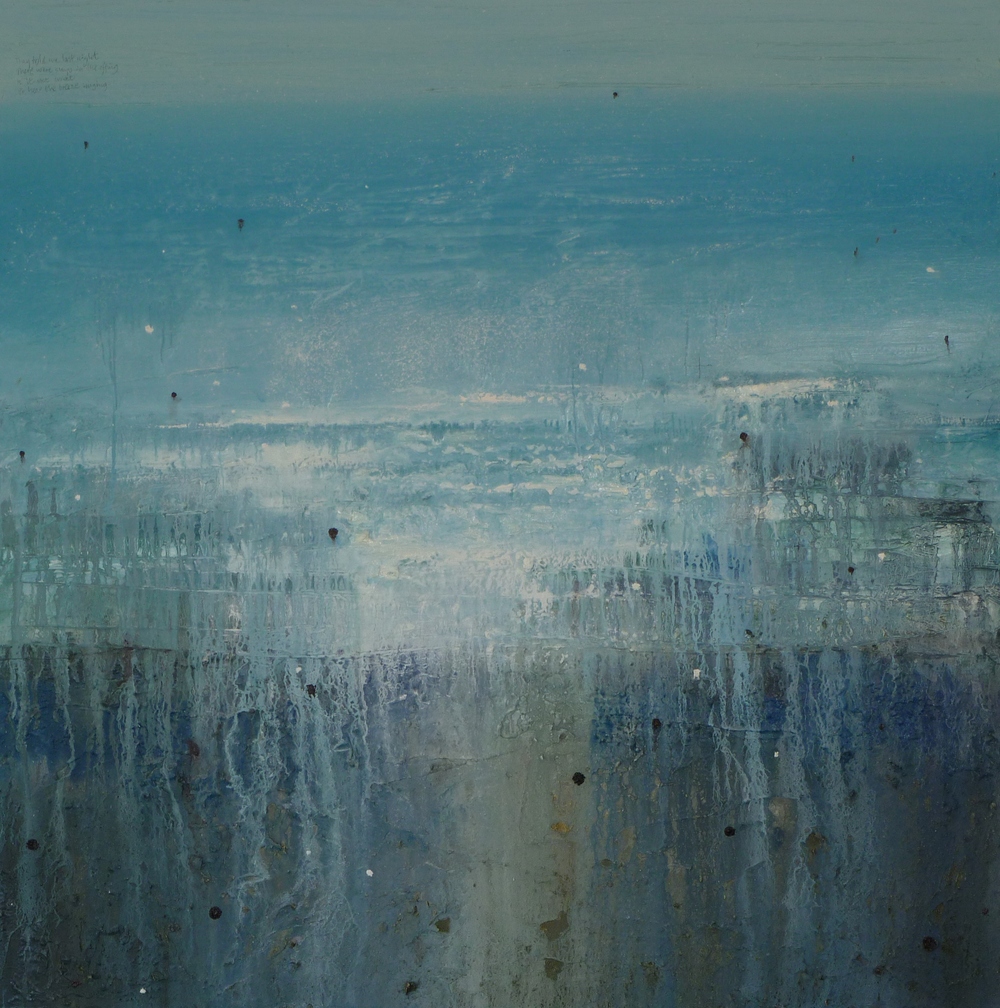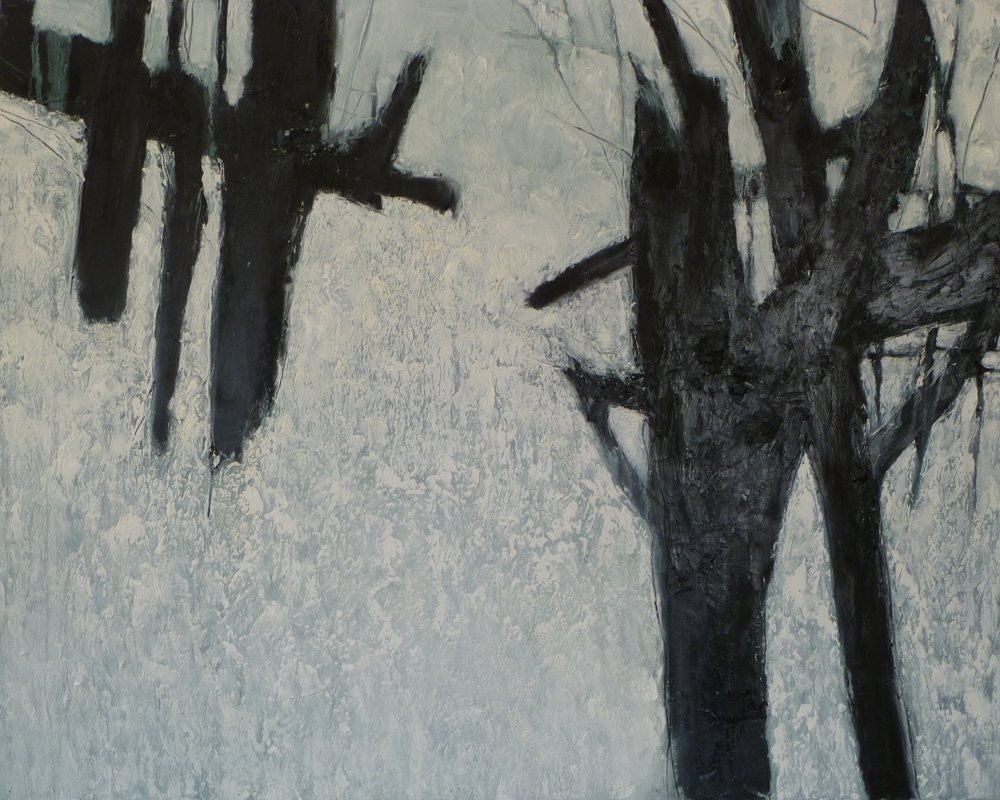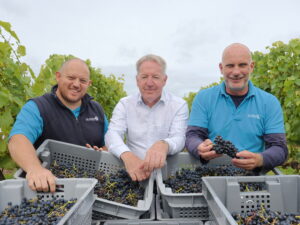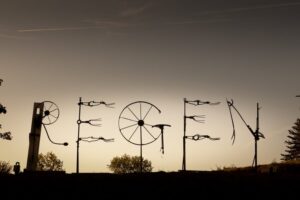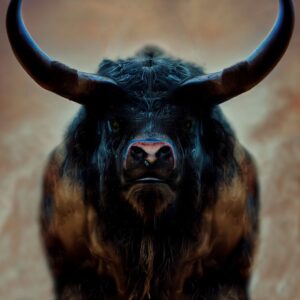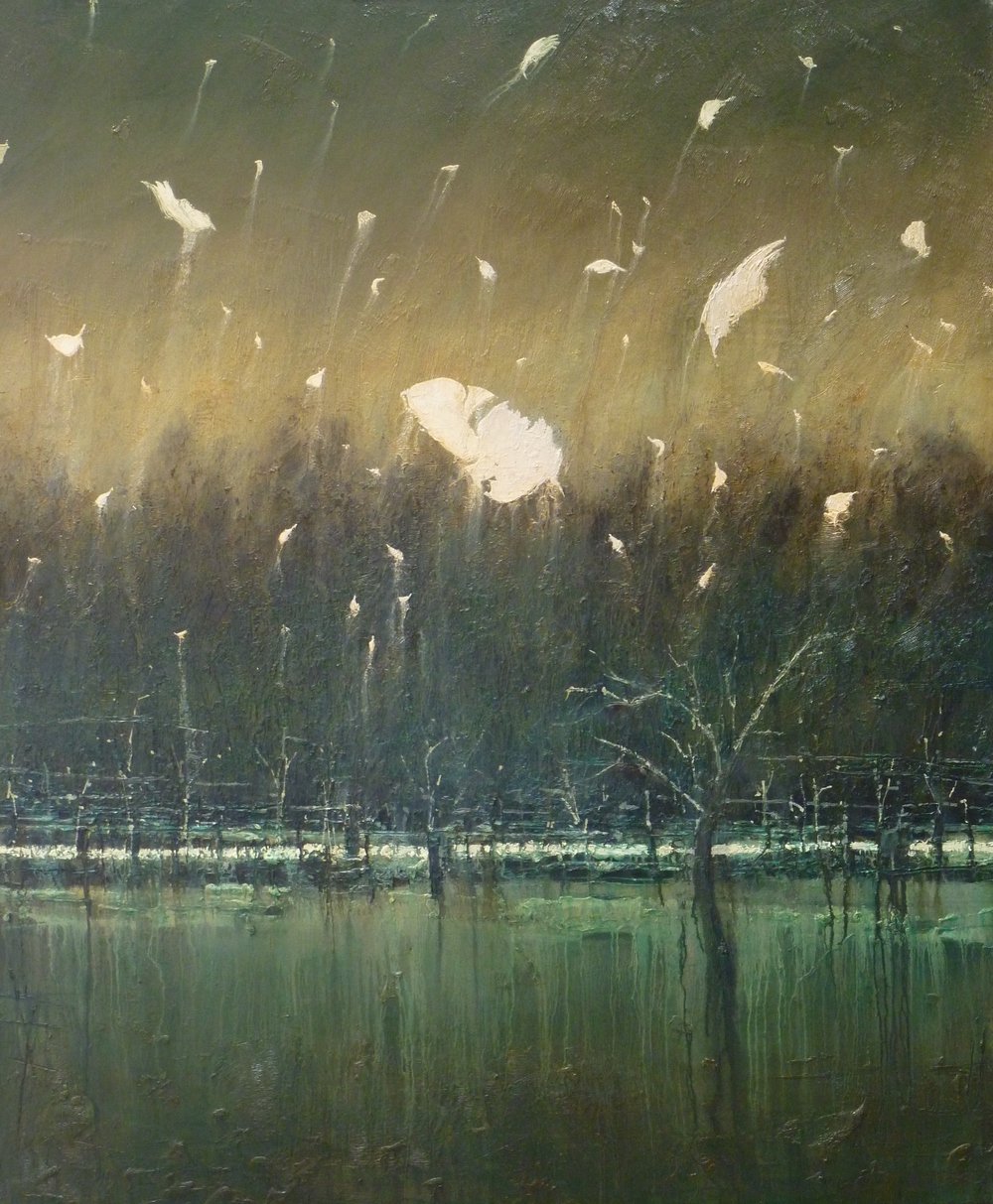
A new exhibition by Jersey artist
David Henley took place in October. He spoke to WENDY JENKINS
‘A PSALM is a cry for help, where the cry finds sounds we didn’t know we held inside us.
The words above are from a Scandinavian folksong, entitled Psalm. If you want to experience paintings that provoke such powerful feelings as those described above, then David Henley’s latest exhibition showing at The Berni Gallery will not disappoint.
‘The Folksong Series’ takes you on a profound journey that will impress and challenge. The work doesn’t so much tell a story (although there is a beautiful tale to each piece), but rather hints, suggests, and captures a mood. There is nothing obvious about this series of work; the artist truly ‘shows’ rather than ‘tells’ and leaves you, dear art critic, to do some work for yourself. How does a rather bleak, provocatively Messianic abstract end up being entitled, ‘Searching for Lambs’? How does a misty, elusive Turner-esque piece make you ache inside with a sense of longing and hope? How can a Celtic Warrior named Cú Chulainn eat you up with passion and fire?
To get a sense of the depth to David’s work, consider the social history that accompanies possibly one of his most significant paintings, God Speed the Plough. Like all the paintings, the title is taken from a famous folksong. It’s a story of tenant farmers living in the North of England in the 19th Century who lived in tumble-down hovels on the land and barely survived on more than a cabbage to eat every day. Their existence was one of extreme poverty and hardship. It was not uncommon for them to pool their meagre incomes in order to buy a horse-drawn plough, which became such a precious tool that it was stored in the local church for safe keeping. It became tradition for the priests to then bless the plough at a service held on the second Sunday after Christmas. The painting says none of this and yet it evokes a sense of the hardship, toil and subsistence living that the farming community endured.
Each painting featured in the exhibition has been inspired by a particular folksong. David describes the way in which the music penetrates his consciousness and begins to work on his imagination:
‘I listen to the piece over and over again, with a sketch book on my lap, and make drawings of whatever comes to mind while immersed in the music. Most of the time, nothing comes but now and again a very clear image arrives and that is what I work up into a painting.’
Music and art have been David’s two passions from childhood. Growing up on a farm, his gentle, hard-working parents ensured his early years were edifying and idyllic. With no television to distract, conversation around the dinner table in the evenings was the cornerstone on which his life was built, where his opinions and those of his sister, were valued and cherished. Having a Methodist Lay Preacher for a father meant that music played a huge part of everyday family life; a large music room in the farmhouse provided an excellent space for spontaneous evenings where each family member would play an instrument. His mother played the piano, his father the fiddle (badly), one uncle the flute and another uncle the cello. This uncle also happened to be a composer and encouraged David in his musical pursuits. Aged 11, he started to play the oboe and subsequently moved on to play the guitar, the accordion and more recently, the melodeon.
The story behind the spark that ignited his love of art is equally charming. David still remembers his first ever art lesson at Victoria College. He describes how his teacher, Robert Julier, gathered his class of over 30 boys around the blackboard and simply said, ‘Watch.’ He drew a perfect circle. ‘What have I done?’ The boys weren’t sure how to respond and kept silent. The only noise was that of the chalk moving deftly on the board as the teacher added shading. In a fleeting moment, the circle had been transformed into a ball and David had discovered his passion.
Half a century later, David fondly reflects on his lifetime spent painting and loves his new found ‘home’; a bespoke studio at Holme Grown, built by his old school friend, Stanley Payn. Here, he balances mornings spent painting with afternoons teaching art classes to small groups of six or so students. This is where the painter feels truly in touch with himself, his art, his music and his community. The paintings that make up ‘The Folksong Series’ have truly been a vehicle whereby David has been able to draw together his two chief loves in life, with the music playing a mystical yet grounding part. As the godfather of English folkmusic, John Kirkpatrick says,
“It reinforces your idenitity – it is a community cement and you know exactly who you are.”

